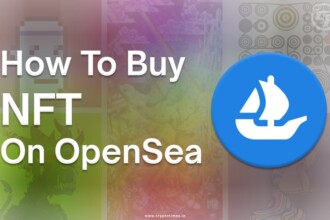China’s ambitions for technological innovations are unmatchable, with initiatives aimed at integrating blockchain into various sectors, showcasing its commitment to innovation and advancement.
China has emerged as a significant player, hosting many innovative projects replicating the global digital landscape. Some of these innovations have projected China as a Web3 hub.
Earlier in March, 2024, Chinese officials proposed boosting the country’s blockchain infrastructure and establishing industry standards to support various areas, including government services, supply chains, and trade. While China maintains its stand on the crypto trading and mining ban, major corporations, including Alibaba and Tencent, are actively working on blockchain projects.
In this article, we will be taking you on an exciting journey to unravel the top 10 Chinese crypto and blockchain projects that not only push the boundaries of technological advancement but also redefine the future of digital transactions.
Whether you are a seasoned crypto enthusiast or a curious newbie, this countdown promises to enlighten, engage, and inspire you
So, let’s dive right in!
List of Blockchain Projects
Blockchain projects are new ideas or businesses that use blockchain technology to make cool stuff like apps or systems. Blockchain is a special way to keep track of transactions on many computers securely and openly. These projects can do lots of different things, from making new types of money to organizing supply chains better or even verifying who you are online.
1. Conflux (CFX)
Conflux has rapidly emerged as one of the most promising Chinese blockchain projects, capturing the attention of both local and global crypto enthusiasts. At the heart of Conflux’s innovative approach lies its unique Tree-Graph consensus algorithm, which sets it apart from other blockchain platforms.
This novel mechanism combines the high transaction speed of Directed Acyclic Graph (DAG) technology with the robust security of Proof of Work (PoW) consensus, resulting in a remarkably scalable and secure blockchain network.
The $CFX token is crucial in the Conflux ecosystem, serving multiple functions that promote platform engagement and growth. These include transaction fee payments, staking rewards for network validators, storage rental for data-intensive applications, and governance through community voting on platform decisions. With its cutting-edge technology and diverse use cases, Conflux is poised to make a lasting impact on the global blockchain landscape.
2. NEO (Chinese Ethereum)
NEO, often referred to as the “Chinese Ethereum,” is a smart contract platform that has gained significant attention within the Chinese crypto community and beyond. Designed specifically for business applications, NEO aims to provide a more efficient and scalable infrastructure for decentralized applications (dApps) and digital assets.
At its core, NEO utilizes the Delegated Byzantine Fault Tolerance (dBFT) consensus mechanism, which ensures fast transaction finality and robust network security. This consensus algorithm allows NEO to support high-throughput applications while maintaining a relatively low barrier to entry for network participants, as it does not require the energy-intensive mining typically associated with PoW-based platforms.
One of NEO’s standout features is its support for multiple programming languages, including C#, Java, and Python.
3. VeChain (VET)
VeChain (VET) is a leading blockchain platform designed to enhance supply chain management and business processes. By leveraging the immutability and transparency of blockchain technology, VeChain provides a robust solution for tracking and verifying product authenticity, quality, and logistics.
This capability is crucial in industries where traceability and accountability are paramount, such as luxury goods, pharmaceuticals, and food and beverage.
The VeChainThor blockchain, which powers the VeChain ecosystem, utilizes a dual-token system consisting of VeChain Tokens (VET) and VeThor Tokens (VTHO). VET is the primary token used for value transfer and transactions within the network, while VTHO is generated by holding VET and is used to power smart contract executions.
VeChain’s partnerships with established enterprises and governments further attest to its potential to transform supply chain management. By providing a secure, transparent, and efficient platform for tracking and verifying products, VeChain is set to revolutionize traditional supply chains and pave the way for a more accountable and trustworthy business environment.
4. Huobi (HTX)
Huobi (HTX) is a prominent centralized cryptocurrency exchange based in China. Since its inception in 2013, Huobi has grown to become one of the world’s largest digital asset trading platforms, offering a wide array of cryptocurrencies for trading.
Huobi plays a vital role in the digital asset ecosystem by providing a secure and reliable platform for users to buy, sell, and exchange cryptocurrencies.
One of Huobi’s key features is its robust trading infrastructure, which supports high-frequency trading and provides users with a seamless trading experience. The exchange also offers various trading tools and features, such as margin trading, futures trading, and over-the-counter (OTC) trading, catering to the diverse needs of its user base.
5. Filecoin (FIL)
Filecoin (FIL) is a decentralised cloud storage platform built on blockchain technology. Filecoin aims to address the challenges of traditional cloud storage systems, such as high costs, data centralization, and security concerns, by creating a more efficient and secure storage network.
The Filecoin network allows users to rent out their unused storage space in exchange for FIL tokens. This peer-to-peer storage model promotes a more equitable distribution of storage resources and enables users to monetise their underutilised storage capacity.
Filecoin’s unique proof-of-replication and proof-of-spacetime consensus mechanisms ensure data integrity and availability, providing users with a reliable and secure storage solution.
6. Qtum (QTUM)
Qtum (QTUM) is a hybrid blockchain platform that combines the security of Bitcoin’s UTXO model with the versatility of the Ethereum Virtual Machine (EVM). By merging these two powerful technologies, Qtum aims to provide a robust, secure, and scalable platform for decentralized applications (DApps) and smart contracts.
Qtum’s unique value proposition lies in its ability to bridge the gap between traditional businesses and the blockchain ecosystem. By offering a familiar and user-friendly development environment, Qtum enables businesses to leverage the benefits of blockchain technology without having to navigate the complexities of alternative platforms.
The Qtum blockchain employs a Proof-of-Stake (PoS) consensus mechanism, which ensures network security and scalability while minimizing energy consumption.
7. Ontology (ONT)
Ontology (ONT) is a public multi-chain project designed to provide a comprehensive framework for building decentralized applications and services. At its core, Ontology emphasizes interoperability, enabling seamless communication between different blockchain networks and facilitating the exchange of data and value.
The Ontology platform offers a suite of customizable tools and modules, allowing developers to create tailor-made solutions for various industries and use cases. This flexibility ensures that Ontology can cater to the diverse needs of businesses and organizations seeking to adopt blockchain technology.
ONT tokens play a crucial role in the Ontology ecosystem, serving as the primary currency for governance, staking, and network fees. By holding and staking ONT tokens, users can participate in the network’s decision-making processes and contribute to its overall security.
8. Bytom (BTM)
Bytom (BTM) is a blockchain platform focused on asset tokenization and the creation of a seamless bridge between the digital and physical worlds.
By enabling the tokenization of real-world assets such as real estate, commodities, and securities, Bytom aims to unlock new opportunities for investment, trading, and asset management.
The Bytom blockchain employs a unique three-layer architecture, consisting of a data transmission layer, a contract layer, and an application layer. This design allows for the efficient and secure management of diverse asset types while also enabling the development of customized applications and services.
BTM tokens serve as the native currency of the Bytom ecosystem, facilitating transactions, staking, and the deployment of smart contracts. By leveraging the power of blockchain technology, Bytom seeks to revolutionize the way assets are managed and traded, fostering a more interconnected and inclusive financial system.
9. Nervos Network (CKB)
Nervos Network (CKB) is a next-generation blockchain platform that introduces a layered architecture separating the consensus and computation layers. This innovative design allows for greater scalability and flexibility, enabling the Nervos Network to support a wide range of decentralized applications and services.
The Nervos Network employs a unique Proof-of-Work (PoW) consensus mechanism called “Proof of Work Secured” (PoWS), which leverages the security of the Bitcoin network. This approach ensures the Nervos Network remains secure and resistant to attacks while providing a robust foundation for developing decentralized applications.
CKB tokens serve as the native currency of the Nervos Network, facilitating transactions, staking, and the deployment of smart contracts within the ecosystem.
10. Wanchain (WAN)
Wanchain (WAN) is a blockchain platform focused on interoperability, enabling cross-chain transactions and communication between different blockchain networks. By breaking down the silos that exist between various blockchains, Wanchain aims to create a unified and interconnected digital asset ecosystem.
Wanchain employs a unique cross-chain protocol that allows assets to move seamlessly between different networks, unlocking new opportunities for trading, investment, and asset management. This functionality is achieved through the use of secure multi-party computations and threshold signatures, ensuring the security and integrity of cross-chain transactions.
WAN tokens serve as the native currency of the Wanchain ecosystem, facilitating staking and acting as collateral for cross-chain transactions.
Conclusion
In conclusion, the blockchain landscape is characterized by diverse projects, each with its unique focus and value proposition. From supply chain management and cloud storage solutions to interoperability and asset tokenization, these projects demonstrate the vast potential of blockchain technology in transforming various industries and aspects of our lives.
Qtum, Ontology, Bytom, Nervos Network, and Wanchain are just a few examples of innovative approaches to address blockchain technology’s challenges and opportunities.
By leveraging the power of decentralization, security, and transparency, these projects are paving the way for a more interconnected, efficient, and inclusive digital ecosystem.
As the blockchain space continues to evolve and mature, staying informed about the latest developments and trends is crucial.
Understanding each project’s unique features and applications can help investors, developers, and businesses make informed decisions about where to allocate resources and how to best leverage the benefits of blockchain technology.







